


When it comes to mountain biking, choosing the right cycle is crucial for an enjoyable and safe riding experience. The best cycle for mountain biking largely depends on the type of terrain you plan to ride on and your riding style.
Read More : ” Is Front Suspension Necessary On A Hybrid Bike? “
Each type of mountain bike offers unique features and benefits that cater to different preferences and skill levels. In this article, we will explore the various types of mountain bikes and help you understand which cycle is best suited for mountain riding.
Explaining the Best Mountain Bikes in Detail:
Read More : ” Difference Between Mountain Bike And Gravel Bike “
Hardtail Mountain Bikes:
Hardtail mountain bikes feature a front suspension fork, providing enhanced control and comfort on rough terrains.They are lightweight, efficient climbers, and suitable for less technical trails.
Full-Suspension Mountain Bikes:
Full-suspension mountain bikes are equipped with both front and rear suspensions, offering superior shock absorption and traction on challenging terrains.They excel in downhill and aggressive riding, providing a smoother and more controlled experience.
Cross-Country (XC) Mountain Bikes:
XC mountain bikes are designed for long-distance rides and racing.They are lightweight, efficient pedaling machines with limited suspension travel, ideal for climbing and fast-paced cross-country trails.
Trail Mountain Bikes:
Trail bikes strike a balance between climbing efficiency and downhill performance.They have moderate suspension travel, allowing riders to tackle technical trails while maintaining maneuverability and speed.
Downhill Mountain Bikes:
Downhill bikes are built for extreme downhill descents and bike park riding.They have extensive suspension travel, slack geometry, and robust components to handle high speeds and big jumps.
Fat Bikes:
Fat bikes feature oversized tires that provide excellent traction and stability on loose surfaces like snow, sand, and mud.They are ideal for adventurous riders seeking to explore unconventional terrains.
Conclusion:
Selecting the best cycle for mountain biking involves considering your riding style, terrain preferences, and skill level. Whether you opt for a hardtail, full-suspension, XC, trail, downhill, or fat bike, each has its advantages and caters to specific riding demands. It’s essential to test different types of mountain bikes and choose the one that suits your needs, ensuring a thrilling and enjoyable mountain biking experience.
Read More: Is mountain biking hard
Hardtail Mountain Bikes
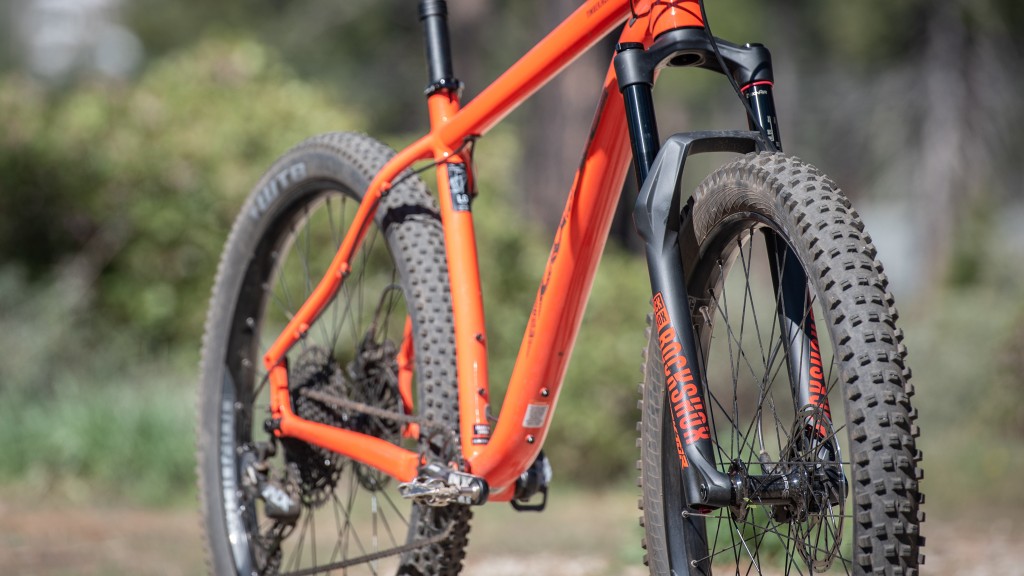


Hardtail mountain bikes are a popular choice for off-road riding on rugged terrains. The term “hardtail” refers to the bike’s suspension system, which typically consists of a front suspension fork but lacks rear suspension.
Read More : ” Can You Ride A Mountain Bike In The Rain? “
This design offers a firm and efficient pedaling platform while providing some level of front-end shock absorption.
One of the key advantages of hardtail mountain bikes is their simplicity. With fewer moving parts and no rear suspension, they tend to be lighter in weight and more affordable compared to full-suspension bikes.
This makes them a preferred choice for riders who prioritize climbing and efficiency.
Hardtails excel in cross-country (XC) riding, which involves long-distance trails and climbs. Their rigid rear end allows for better power transfer and more direct handling, making them efficient climbers and well-suited for pedaling over long distances.
However, it’s important to note that hardtails have limited rear-end suspension, which means they may not provide the same level of comfort and traction on rough or technical descents compared to full-suspension bikes.
Riders may experience more vibrations and bumps on challenging trails.
Ultimately, the choice between a hardtail and a full-suspension mountain bike depends on personal preference, riding style, and the type of terrain you plan to ride.
Hardtails are a great option for riders who prioritize efficiency, climbing prowess, and budget-consciousness, while full-suspension bikes offer enhanced comfort and control for aggressive downhill riding and rough terrains.
Full-Suspension Mountain Bikes



Full-suspension mountain bikes, also known as dual suspension bikes, are designed to provide riders with enhanced comfort, control, and traction on rugged off-road terrains.
Read More : ” Can You Mountain Bike Without Suspension? “
Unlike hardtail bikes, full-suspension bikes feature both front and rear suspension systems.
The front suspension fork absorbs impacts from the trail, allowing the bike’s front wheel to move independently and maintain better contact with the ground. This helps to reduce fatigue and improve handling on rough trails.
The rear suspension, usually in the form of a shock absorber, allows the rear wheel to move up and down, absorbing larger bumps and maintaining traction on uneven surfaces.
One of the key advantages of full-suspension bikes is their ability to handle technical descents with greater ease. The rear suspension helps to absorb impacts, keeping the rider more stable and in control.
This makes them ideal for aggressive trail riding, downhill racing, and tackling challenging terrain.
Full-suspension bikes offer increased comfort, as the suspension systems help to dampen vibrations and reduce the impact on the rider’s body.
This can result in less fatigue and a smoother ride, especially on longer rides or when encountering rough trails.
However, it’s important to note that full-suspension bikes tend to be heavier and more expensive than hardtail bikes. The additional components and complexity of the suspension system contribute to the higher price tag.
Additionally, the rear suspension can absorb some of the rider’s pedaling energy, leading to a slight loss of efficiency compared to hardtail bikes on smooth, flat surfaces.
The choice between a full-suspension and a hardtail bike depends on factors such as riding style, terrain, and personal preference.
Full-suspension bikes are well-suited for riders who prioritize downhill performance, technical trails, and maximum comfort, while hardtail bikes may be preferred for those who prioritize climbing efficiency, budget-consciousness, and a simpler design.
Cross-Country (XC) Mountain Bikes
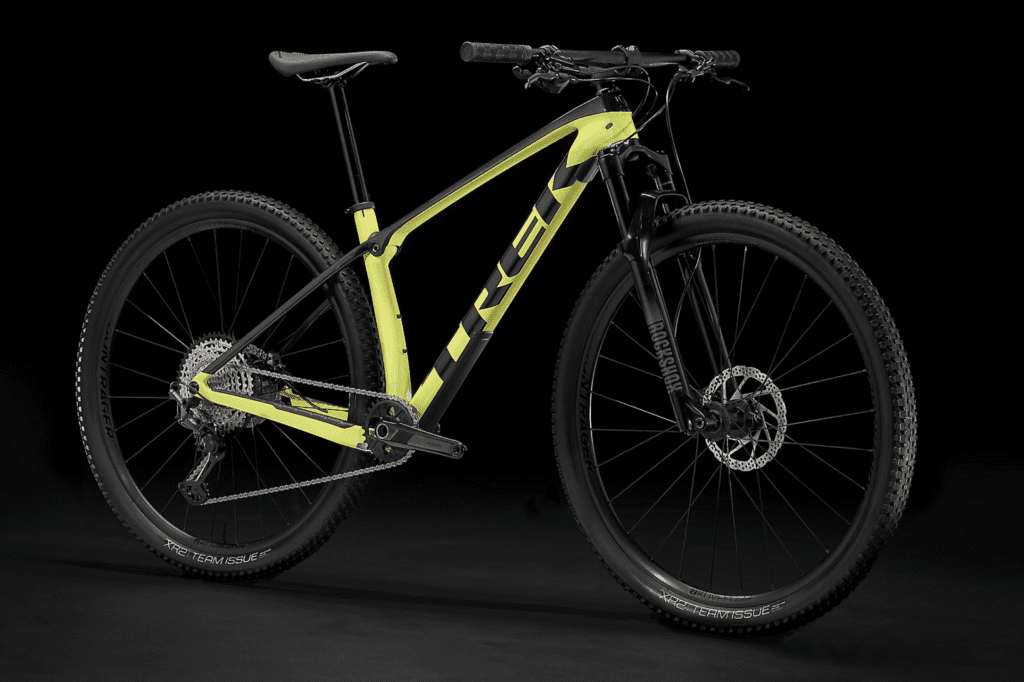


Cross-country (XC) mountain biking is a popular discipline that focuses on speed, endurance, and technical skills over a variety of terrain.
Read More : ” Why Are Full Suspension Bikes So Expensive? “
To excel in this demanding sport, riders often choose specialized XC mountain bikes designed to maximize efficiency and performance.
In this article, we will explore XC mountain bikes in detail, discussing their unique features, advantages, and suitability for different types of riders and trails.
Lightweight Construction:
- Frame Materials: Carbon Fiber and Aluminum Alloys
- Components: High-quality, Lightweight Parts
Efficient Geometry and Suspension:
- Aggressive, Yet Stable Geometry
- Front Suspension Forks for Control and Comfort
Climbing and Acceleration:
- Efficient Power Transfer
- Gear Ratios and Cranksets for Quick Acceleration
Descending and Handling:
- Stability and Control at High Speeds
- Disc Brakes for Responsive Stopping Power
Tire Selection:
- Narrower Tires for Lower Rolling Resistance
- Tread Patterns for Various Trail Conditions
Customization and Upgrades:
- Fine-Tuning the Bike for Personal Preference
- Considering Components and Accessories
Conclusion:
Cross-country mountain bikes are purpose-built machines, optimized for speed and endurance on a range of challenging trails.
Their lightweight construction, efficient geometry, and suspension systems make them ideal for tackling long climbs and technical descents.
Whether you’re a competitive racer or an enthusiast seeking thrilling adventures, an XC mountain bike can be your key to conquering the trails with speed and agility.
Trail Mountain Bikes
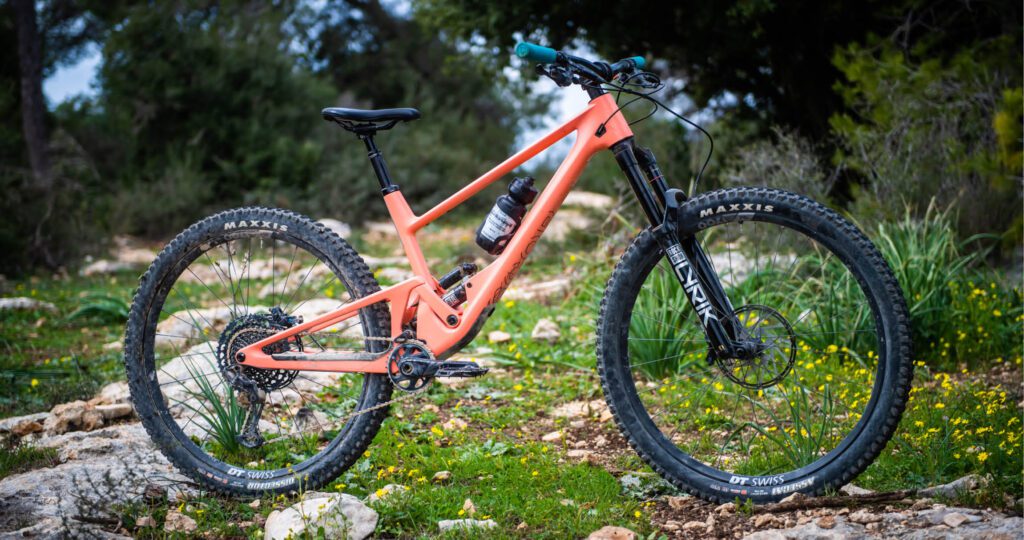


Trail mountain biking is a versatile and popular discipline that caters to riders seeking a balance between climbing, descending, and overall trail enjoyment.
Read More : ” Do Mountain Bike Tires Have Tubes? “
Trail mountain bikes are specifically designed to handle a variety of terrains and trail features, making them an excellent choice for riders looking to explore a wide range of off-road adventures.
In this article, we will delve into the world of trail mountain bikes, discussing their unique characteristics, components, and benefits for riders of different skill levels.
All-Round Performance:
- Versatile Geometry for Climbing and Descending
- Balanced Suspension for Comfort and Control
Suspension Systems:
- Front Suspension Forks for Smoother Handling
- Optional Rear Suspension for Enhanced Comfort
Trail-Ready Components:
- Wide Range of Gearing for Climbing and Speed
- Disc Brakes for Reliable Stopping Power
Tire Selection:
- Aggressive Tread Patterns for Traction and Cornering
- Tubeless Technology for Reduced Puncture Risk
Frame Construction and Materials:
- Aluminum and Carbon Fiber Frames for Strength and Lightweight
- Durable Build to Withstand Demanding Trail Conditions
Handling and Maneuverability:
- Nimble and Responsive Handling for Technical Sections
- Stable Geometry for Confidence on Descents
Conclusion:
Trail mountain bikes are designed to excel on a variety of trails, offering a blend of climbing efficiency and descending capabilities.
With their versatile geometry, suspension systems, and trail-specific components, these bikes provide riders with the confidence and control to tackle challenging terrain and enjoy the thrill of off-road riding.
Whether you’re a beginner exploring local trails or an experienced rider seeking new adventures, a trail mountain bike is a reliable companion for your outdoor pursuits.
Downhill Mountain Bikes



Downhill mountain bikes are specifically designed for the exhilarating sport of downhill riding. These bikes are built to handle the demanding and technical terrain encountered on steep descents.
Read More : ” How Long Should Mountain Bike Tires Last? “
The keyword “downhill mountain bikes” refers to a specific type of mountain bike that excels in downhill riding.
These bikes feature several key components and design characteristics that make them suitable for tackling rugged and challenging trails.
They typically have a long wheelbase and a slack geometry, which enhances stability and control at high speeds.
Downhill mountain bikes also incorporate advanced suspension systems, including both front and rear suspension, to absorb impacts and maintain traction over rough terrain.
The frames of downhill mountain bikes are typically made from strong and durable materials like aluminum or carbon fiber to withstand the rigors of aggressive riding. They also feature wide and knobby tires for maximum grip and control.
Additionally, downhill mountain bikes are equipped with powerful hydraulic disc brakes to provide reliable stopping power when navigating steep descents.
These bikes are purpose-built for the adrenaline-pumping experience of downhill riding, offering riders the confidence and capability to tackle challenging trails.
Whether you’re a seasoned downhill enthusiast or just getting started, a downhill mountain bike is essential to fully enjoy the thrill and excitement of this extreme sport.
Fat Bikes
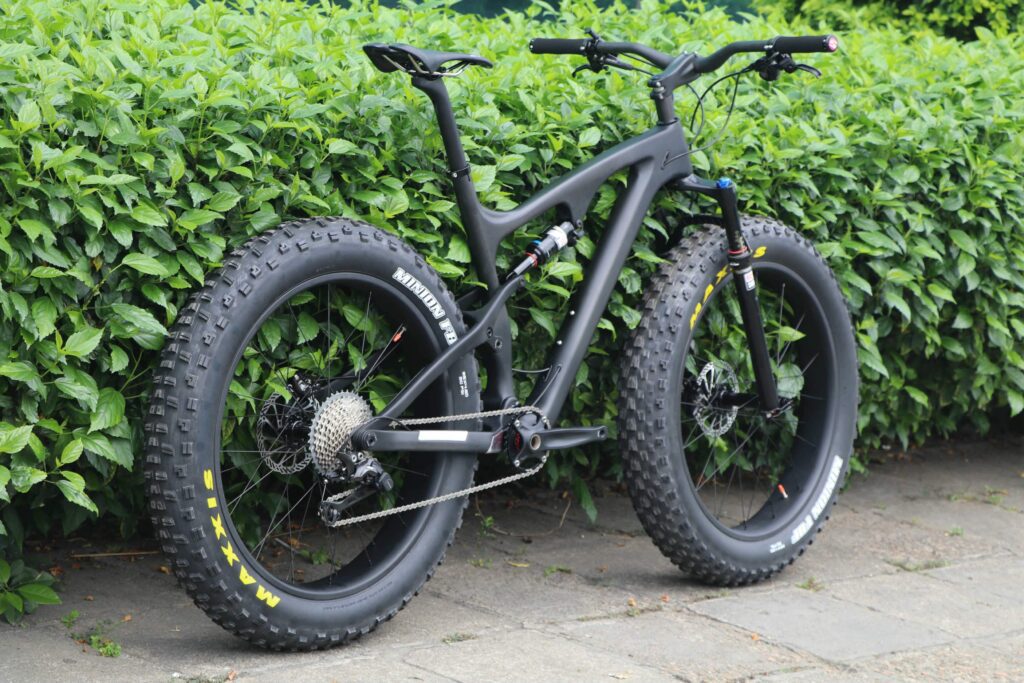


Fat bikes are a unique type of mountain bike that is designed to tackle challenging terrains, including snow, sand, and mud.
The keyword “fat bikes” refers to these specialized bicycles that feature exceptionally wide tires, typically measuring 3.8 inches or wider.
The distinguishing feature of fat bikes is their oversized tires, which provide increased surface area and traction.
The wider tires are run at lower tire pressures, allowing them to conform to uneven surfaces and maintain grip in challenging conditions. This makes fat bikes well-suited for riding on soft and loose terrain where regular mountain bikes may struggle.
The large tires of fat bikes also offer enhanced stability and flotation, allowing riders to confidently traverse surfaces like snow or sand.
The increased tire width helps distribute the rider’s weight over a larger area, reducing the likelihood of sinking or getting stuck.
In addition to their wide tires, fat bikes often feature sturdy frames and components to withstand the demands of off-road riding. They may have additional clearance to accommodate the larger tires, as well as wider rims to provide optimal tire support.
Fat bikes have gained popularity among riders looking to explore unconventional terrain or seeking a new level of adventure. They offer a fun and versatile riding experience, allowing cyclists to go where traditional mountain bikes may struggle.
Whether you’re navigating snowy trails, sandy beaches, or muddy paths, a fat bike can provide the traction and stability needed to conquer challenging conditions.
Factors to Consider When Choosing a Mountain Bike
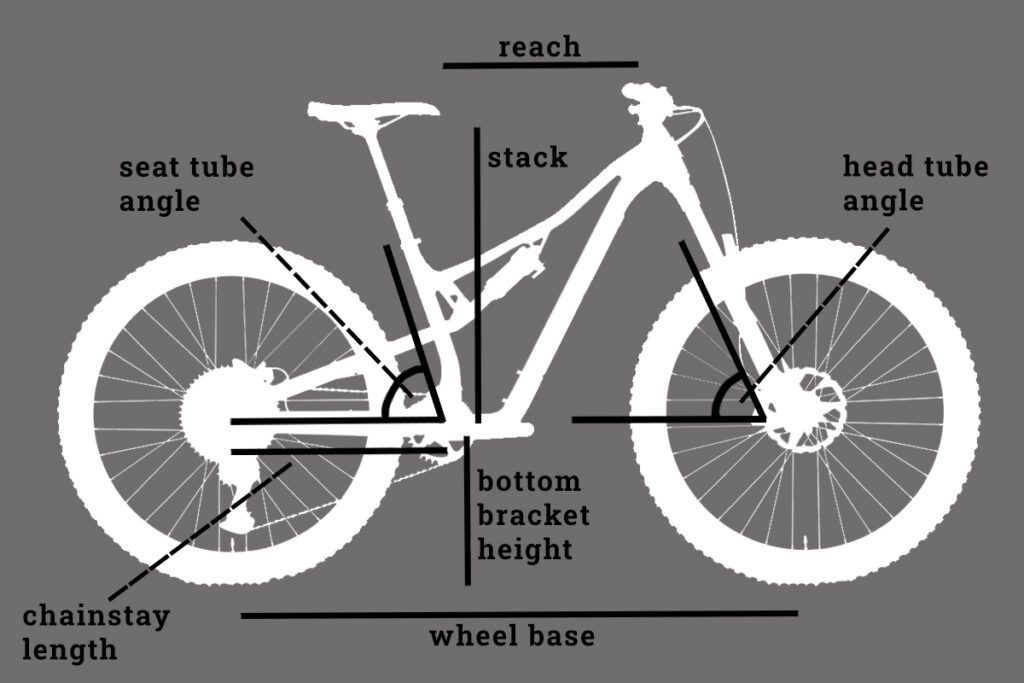


When choosing a mountain bike, there are several important factors to consider. The keyword “Factors to Consider When Choosing a Mountain Bike” refers to the key aspects that should influence your decision-making process.
Here are some crucial points to keep in mind:
Riding Style:
Determine the type of riding you’ll be doing most often. Are you primarily interested in cross-country, trail, downhill, or all-mountain riding? Different bike styles are optimized for specific disciplines.
Frame Material:
Mountain bike frames are typically made of aluminum, carbon fiber, or steel. Each material has its own characteristics in terms of weight, durability, and cost. Consider your preferences and budget when selecting the frame material.
Suspension:
Decide whether you need a bike with front suspension (hardtail) or both front and rear suspension (full-suspension). Suspension helps absorb shocks and improves control, but it also adds weight and cost.
Wheel Size:
Mountain bikes come with different wheel sizes, including 26-inch, 27.5-inch, and 29-inch. Each size has its own pros and cons, affecting factors such as maneuverability, rolling efficiency, and stability.
Components:
Pay attention to the components of the bike, including the drivetrain, brakes, and wheels. Higher-quality components typically offer better performance and durability, but they also come at a higher price point.
Fit and Comfort:
Ensure the bike fits you properly and provides a comfortable riding position. Consider factors such as frame size, saddle type, and handlebar width to ensure a good fit for your body.
Budget:
Determine your budget range and prioritize the features that are most important to you. Consider the long-term investment value and potential for upgrades in the future.
By carefully considering these factors, you can make an informed decision when choosing a mountain bike that aligns with your riding preferences, budget, and long-term goals.
Test Ride and Consultation
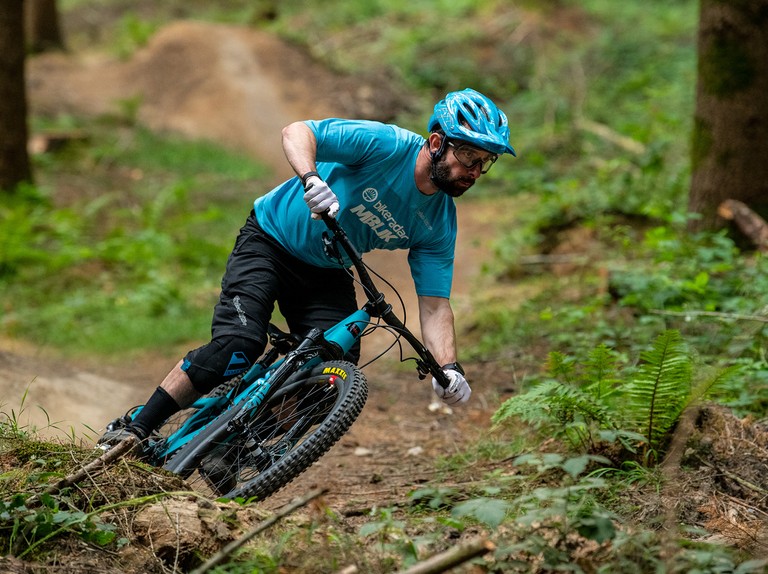


Test riding and consultation are essential steps when choosing a mountain bike. The keyword “Test Ride and Consultation” refers to the process of physically trying out bikes and seeking expert advice to make an informed decision.
Here’s a detailed explanation of these factors:
Test Ride:
A test ride allows you to experience how a mountain bike performs and feels. It helps you assess its comfort, handling, and responsiveness.
During a test ride, pay attention to the bike’s suspension, braking, shifting, and overall stability. This firsthand experience can greatly influence your decision.
Consultation:
Consulting with experts, such as bike shop staff or experienced riders, can provide valuable insights and guidance.
They can help you understand different bike models, components, and their suitability for your specific needs. Their expertise can help you narrow down your options and find the best bike for you.
Bike Shop Assistance:
Visiting a reputable bike shop is highly recommended. The staff can assist you in choosing the right frame size, adjusting the bike for a proper fit, and answering any questions you may have.
They can also offer valuable recommendations based on your riding style, skill level, and budget.
Expert Advice:
Seeking advice from experienced riders or joining online forums and communities can provide valuable input. These individuals can share their firsthand experiences and insights, helping you make an informed decision.
Consider Multiple Options:
Test ride and consult with experts on multiple bike models to get a broader perspective. Trying different bikes and gathering opinions will help you compare their performance, features, and overall suitability for your needs.
By incorporating test rides and consultations into your decision-making process, you can gather valuable information, gain a better understanding of various bikes, and ultimately choose the mountain bike that best matches your riding style, preferences, and budget.
Comparison Table Between All Types of Bikes
Certainly! Here’s a comparison table highlighting the key features of each type of mountain bike:
| Mountain Bike Type | Suspension System | Terrain Suitability | Riding Style | Weight |
| Hardtail | Front Suspension | Smooth to Moderate Trails | Cross-Country | Lighter |
| Full-Suspension | Front & Rear | All Terrains | Trail, Enduro, Downhill | Heavier |
| Cross-Country (XC) | Varies (usually front suspension) | Variety of Terrains | Cross-Country Racing | Lighter |
| Trail | Full-Suspension | Technical Trails | All-Mountain | Moderate |
| Downhill | Full-Suspension | Steep Descents | Downhill Racing | Heavier |
| Fat | Varies (usually front suspension) | Soft Terrain, Snow | All-Mountain | Heavier |
Please note that these are general characteristics, and specific models within each category may vary. It’s important to choose a bike based on your preferred riding style, terrain, and personal preferences.
Our Best Picks
Here are three mountain bikes that are highly recommended by us:
Which Cycle Is Best For Mountain? Find out now
Hardtail Mountain Bike:
- Model: Specialized Chisel
- Suspension System: Front Suspension
- Terrain Suitability: Smooth to Moderate Trails
- Riding Style: Cross-Country
- Notable Features: Lightweight frame, efficient power transfer, precise handling.
Trail Mountain Bike:
- Model: Santa Cruz 5010
- Suspension System: Full Suspension
- Terrain Suitability: Technical Trails
- Riding Style: All-Mountain
- Notable Features: Balanced geometry, capable suspension, versatile performance.
Downhill Mountain Bike:
- Model: YT Tues
- Suspension System: Full Suspension
- Terrain Suitability: Steep Descents
- Riding Style: Downhill Racing
- Notable Features: Downhill-specific design, robust suspension, excellent stability.
These bikes are just examples, and there are many other great options available in the market. It’s important to consider your specific needs, preferences, and budget when choosing a mountain bike.
Conclusion:
In conclusion, choosing the best mountain bike depends on various factors such as riding style, terrain, personal preferences, and budget. Each type of mountain bike offers unique features and benefits that cater to different riding needs.
Hardtail mountain bikes are a popular choice for riders who prioritize efficiency, lightweight design, and smoother trails. They excel in cross-country riding and provide a responsive feel.
Full-suspension mountain bikes offer enhanced comfort, traction, and control by utilizing both front and rear suspension systems. They are suitable for more technical trails and all-mountain riding, providing better performance on rough and challenging terrain.
Cross-country (XC) mountain bikes are designed for speed and efficiency, ideal for long-distance riding and racing. They typically feature lightweight frames and are built to handle smoother trails and climbs.
Trail mountain bikes strike a balance between climbing ability and descending prowess. They are versatile and can handle a wide range of terrains and trail features, making them a popular choice for all-mountain riding.
Downhill mountain bikes are purpose-built for aggressive downhill racing and riding on steep and challenging terrains. They feature robust suspension systems, durable components, and a stable geometry to handle high speeds and big jumps.
Fat bikes are designed with wide tires to provide better traction and stability on soft and loose surfaces like snow, sand, or mud. They are suitable for riders who want to explore off-road trails and enjoy riding in challenging conditions.
Ultimately, the best mountain bike for you will depend on your riding goals, the type of trails you plan to ride on, and your personal preferences.
It’s important to test ride different bikes, consider the features and specifications, and choose the one that suits your needs and riding style the best.
FAQ’S
Which bike is best for mountain ride?
The best bike for mountain riding depends on personal preferences and the type of terrain. Full-suspension mountain bikes are versatile and suitable for a wide range of trails.
What are the 2 types of mountain bikes?
The two types of mountain bikes are hardtail and full-suspension. Hardtail bikes have a suspension fork in the front, while full-suspension bikes have both front and rear suspension.
Which type of bicycle is best?
The best type of bicycle depends on your specific needs and preferences. Road bikes are great for speed and endurance, mountain bikes are ideal for off-road trails, and hybrid bikes offer a versatile option for various terrains.
What is the most common mountain bike?
The most common type of mountain bike is the hardtail mountain bike, which features front suspension and a rigid rear frame. It offers a balance between efficiency and affordability for various trail riding conditions.
How can I choose a bike?
To choose a bike, consider your riding style, terrain, budget, and personal preferences. Test ride different bikes, consult with experts, and compare features to find the right fit for you.



Welcome to Bikegenics, where passion meets performance! We are a leading online destination for all things related to mountain biking, dedicated to providing you with top-notch gear, expert advice, and an immersive community to fuel your two-wheeled adventures. With a commitment to excellence and a deep love for the sport, we strive to elevate your biking experience to new heights.
